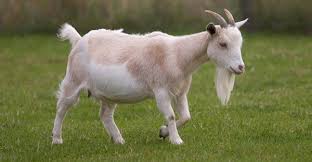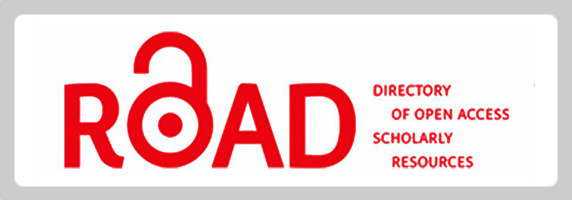Characterization of Indigenous Goat Production System and Production Constraints in East Arsi Zone, Oromia Region, Ethiopia
Abstract
This study was aimed to generate organized information based on household survey. The study was conducted in three districts each representing different agro-ecologies. A total of 156 households (52 in each agro-ecology) were interviewed for the household survey. Data on goat production system were collected through questionnaire. The collected data recorded and analyzed by using SPSS version 20 and then described by descriptive statistics. According to this study, the average goat flock size in household was 7.6 in highland, 7.75 in midland and 10.2 in lowland study areas. The main reason of keeping goat in study area was for cash income, milk production, saving purpose. Natural pasture and river were the major feed and water source for goats in the study area in dry and rain season respectively. The majority of the households use separate type of housing in highland (59.6%) and in midland (76.9%) study areas, while in lowland (73.1%) study area uses kraal types of housing system. Herding practice of farmers 78.8% in highland, 90.4% in midland and 67.3% in lowland study areas of households run their goats separate from other households. Most of goat owners in the study area use uncontrolled type of mating. Growth rate, body appearance, liter size and color are most important traits in study area to select breeding bucks and does. In this area about 53.8% in highland, 51.9% in midland and 75% in lowland farmers did not carry out castration practice. As indicated present result, goat pox, diarrhea, ticks, anthrax and foot and mouth disease were goat diseases prevail in the study area. For treating their goats majority (62.8%) of goat owners in the study area accessed only government veterinary clinics. Feed shortage, disease and predator were main goat production constraints in study area. From this study results, improved forage establishment program, developing water sources, animal health service extension, awareness regarding the importance of castration and fattening and training for goat owners to focus on economically important traits during selection are forwarded for this study area.
Downloads
References
Adane Hirpa and Girma Abebe (2008). Economic significance of sheep and goats of Ethiopian.
Ahmed Seid (2013). on-farm phenotypic and production system characterization of indigenous goats in horro guduru wollega zone MSc thesis.
Alubel Alemu (2015). On-farm phenotypic characterization and performance evaluation of Abergelle and Central Highland Goats Breeds as an input for designing community-based Breeding program Msc thesis.
Ameha Sebsibe (2008). Sheep and goat meat characteristics and quality. In: Alemu Yami and R.C. Merkel (Eds). Sheep and goa production handbook for Ethiopia. Ethiopian sheep and goat productivity improvement program (ESGPIP), Addis Ababa Ethiopia. pp 323-328.
Bekalu Muluneh (2014). Phenotypic characterization of indigenous goat types and their production system in West Gojam Zone of Amhara region, Ethiopia. MSc Thesis Haramaya university.
Belete, A. (2013.) On farm phenotypic characterization of indigenous goat types and their production system in bale zone of oromia region, Ethiopia. MSc Thesis Submitted to Hawassa University the School of Graduate Studies, Through School of Range science and animal science 2013.
CSA. (2017). Federal Democratic Republic of Ethiopia, Central Statistical Agency (CSA) Agricultural sample survey.Volume II, report on livestock and livestock characteristics (private peasant holdings). Statisticalbulletin,570, April 2013, Addis Ababa, Ethiopia.
Cochran, W. G. (1977). Sampling techniques (3rd ed.). New York: John Wiley & Sons.
EAZAO (East Arsi Zone Agricultural Office) (2018). “Annual report”, East Arsi Zone, Oromia Region, Ethioipia.
Endashaw Assefa (2007). Assessment on production system and marketing of goats at Dale district, Sidama Zone.An MSc Thesis, Hawassa University, Ethiopia.
FARM Africa (1996). Goat types of Ethiopia and Eritrea. Physical descriptions and management systems. Farm Africa, London, UK, and ILRI (International Livestock Research Institute). Nairobi, Kenya.
Gaten by, R. (1986). Sheep production in the tropics and subtropics. Tropical Agricultural Series.Longman. London and New York.genetic study. Animal Genetic, 25: pp 83-85.
Grum Gebreyesus (2010). Phenotypic characterization of indigenous afar goat breed andhusbandry practices of pastoralists in afar region. M.Sc. thesis presented to School ofGraduate Study of Haramaya University.
Hulunim Gatew (2014). On-Farm Phenotypic Characterization and Performance Evaluation of Bati, Borena and Short Eared Somali Goat Populations of Ethiopia. MSc thesis, Submitted to the School of Graduate Studies of Haramaya University, Ethiopia. 140p.husbandry practices of pastoralists in afar region. M.Sc. thesis presented to School of Graduate.
Jaitner J., J. Soweb, E.Secka-Njieb, and L. Demp (2001). Ownership pattern and management practices of small ruminants in The Gambia-implications for a breeding programme. Small Rumin. Res.. 40:101-108.
Mahilet Dawit (2012). Live characterization of Hararghe high land goat and their production system in eastern Hararghe. M.Sc. Thesis presented to School of Graduate Study of Haramaya University.
Nigatu Alemayehu (1994). Characterization of indigenous goat types of Eritrea, Northern and Western Ethiopia. M.Sc. Thesis, Alemaya University of Agriculture. Alemaya, Ethiopia.
Seifemichael Mamo (2013). Phenotypic characterization of indigenous afar goat breed andSemakula, J., Mutetikka, D., Kugonza, R. D. and Mpairewe, D., 2010. Variability in Body Morphometric Measurements and Their Application in Predicting Live Body Weight of Mubende and Small East African Goat Breeds in Uganda. Middle-East Journal of Scientific Research 5 (2): pp98-105.
Solomon Gizaw, AzageTegegne, Berhanu Gebremedhin and Dirk Hoekstra (2010). Sheep and goat production and marketing systems in Ethiopia: Characteristics and strategies for improvement. IPMS (Improving Productivity and Market Success) of Ethiopian Farmers Project Working Paper 23. ILRI (International Livestock Research Institute), Nairobi, Kenya. pp58.
Tegegn Fantahun, Kefyalew Alemayehu and Solomon Abegaz (2012). On-Farm Phenotypic Characterization of Goat Genetic Resources in Bench Maji Zone, Southwestern Ethiopia. Bahir Dar University, Bahir Dar, Ethiopia; Institute of Biodiversity Conservation, Addis Ababa, Ethiopia.
Tesfaye Tsegaye (2009). Characterization of Goat Production Systems and On- Farm Evaluation of the Growth Performance of Grazing Goats Supplemented with Different Protein Sources in Metema, Amhara Region, Ethiopia. MSc Thesis, Submitted to the School of Graduate Studies of Haramaya University, Ethiopia. 108P.
Tsedeke Kocho (2007). Production and marketing systems of sheep and goats in Alaba, Southern Ethiopia.An MSc Thesis, Hawasa University, Ethiopia.
Tsigabu Gebreslassie (2015). Phenotypic characterization of indigenous goat types and their production system in Gambella region Ethiopia Haramaya university MSc. thesis.
Umeta, G., Feyisa, H., Misgana, D. and Merga, M. (2011). Analysis of goat production situation at Arsi Negele Woreda,Ethiopia. Journal of Stored Products and Postharvest Research, 2(8):156–163.
Workneh A. (1992). Preliminary survey of indigenous goat types and goat husbandry practices in Southern Ethiopia.An M.Sc. Thesis presented to Alemaya University of Agriculture. Alemaya, Ethiopia.











